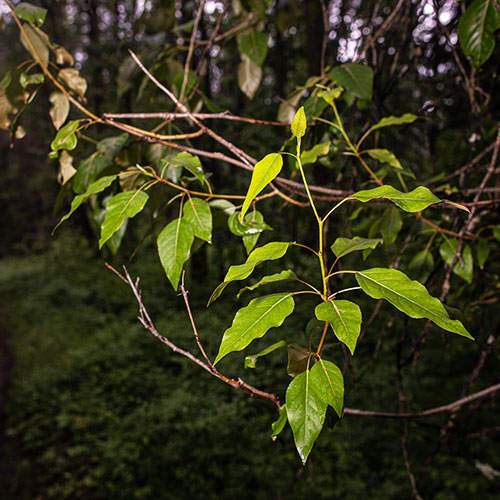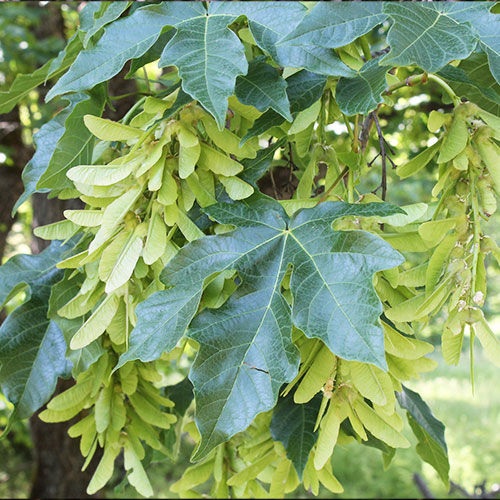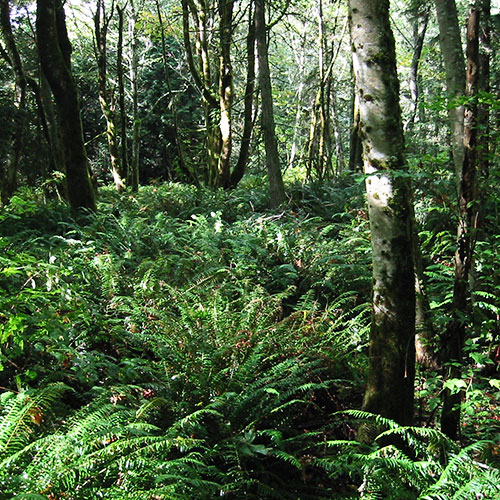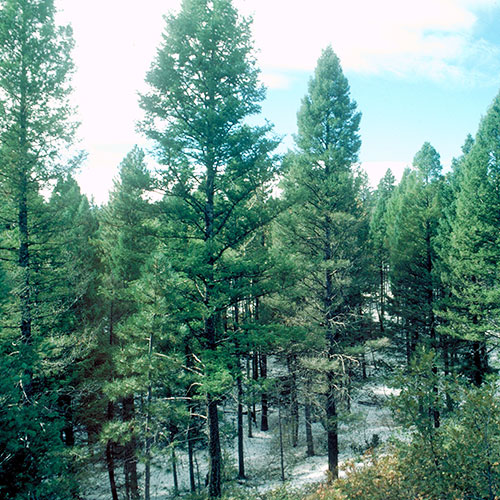Riparian Forests
The Dungeness River is extremely dynamic.
With each flood, the river cuts new channels and removes old plants, creating new river bottomlands. As trees fall in floods, different types of trees have a chance to grow, and that adds variety to the habitat. These natural cycles, along with tree harvests and other human impact during the 20th century, have led to the growth of plants which quickly and amply reproduce. This allows them to rapidly fill in disturbed riverside habitats.
The Dungeness forest has marks typical of forests around the world. The forest is structured in vertical “layers,” with mostly sun-loving pioneer species in the canopy. the highest branches above the rest of the forest. Below the canopy is an understory made up of smaller trees and shrubs which prefer lower light levels. Finally, shade-loving species such as ferns, mosses, lichens, and small flowering plants shoot up in the herb layer on the forest floor.
A mosaic of horizontal habitats also exists, and vary due to disturbance, soil type, and soil moisture, all changing as the river moves in and out of its channel. River forests contain a varied mix of sizes and ages of plants, from new seedlings in the river channels to giants that have survived the wanderings of the river.
The Big Five: Trees in Railroad Bridge Park
Five species of trees tower in the forest around Railroad Bridge Park: Black Cottonwood, Big Leaf Maple, Red Alder, Douglas Fir, and Western Red Cedar.
Black Cottonwoods
Tallest of all are the “old” Black Cottonwoods (Populus tricocarpa), whose huge gray trunks reach half their height before splitting into several giant limbs which stretch farther upward into the sky.
Their spade-shaped leaves flutter in the slightest breeze, yet strong windstorms cause whole trees to violently twist back and forth. These storms occasionally cause catastrophic failures of their water-logged trunks.This happened to the cottonwood that shattered the bridge trestle when it fell in October, 2001.
The biggest cottonwoods in Railroad Bridge Park are probably less than 100 years old, but because of their fast growth, they are over four feet around and more than 160 feet tall. The loop trail north of the park entrance road has an almost uniform stand of young cottonwoods. Apparently these pioneers sprang up following a flood in the last 50 years.

Big Leaf Maple
In contrast to the Black Cottonwoods, the over-arching limbs of Big-leaf Maples (Acer macrophyllum) grow much closer to the ground. This causes spreading branches and dense shade. Their big maple leaves are obvious, some reaching over a foot wide. The biggest maple trees are set well back from the present river bed. The less-disturbed conditions have granted them time to reach large sizes. These maples can easily be spotted by their hug leaves. even when seen at a distance among other trees. Even in the winter, their spreading limbs. stand out. The oldest maples may be as wide as they are tall.

Red Alder
The last large deciduous tree widely found throughout Railroad Bridge Park is Red Alder (Alnus rubra). Alders are considered “weed trees” by foresters because they rapidly grow up again following changes, and shade out other more “desirable” trees. Red Alders in the park tend to be smaller than cottonwoods and maples and are usually less than 100 feet tall and at most 2 feet in diameter. During most of the year they can easily be picked out by their smooth, grayish, blotchy bark. They also have male tassels and female cones on their outermost branch tips. The female alder cone look very much like miniature conifer cones.
Alders are also well known for having knobs on their roots which enable them to convert nitrogen from the air into usable soil nitrogen. Look for these knobs where alder roots have been exposed by bank erosion along the river. Alder leaves provide lots of nitrogen in the ground for other plants to use when they decompose in the fall and winter.

Conifers
Finally, two conifers found in abundance in the canopy of the riparian forest in Railroad Bridge Park are Douglas Firs (Pseudosuga menziesii) and Western Red Cedars (Thuja plicata). Douglas firs, with several smaller red cedars, are particularly dominant along the main trail west of the trestle where the trail passes between rows of towering conifers. Douglas firs can easily be told by their soft yellow-green needles that point in all directions from the twig. They have unique cones with three-pointed leaves sticking out between the scales. Grand Firs (Abies grandis) are also found throughout the park, but are not large, dominant trees. They have needles which form flat sprays on the twig.
Curiously, Western Hemlock (Tsuga heterophylla) is rare in Railroad Bridge Park. There is only one small hemlock of which we know, probably because they grow better in more stable areas. There is one Pacific Yew (Taxus brevifolia) that we know of, hiding out near the edge of the road on the Ridgeway property.

Below the Canopy
The understory of the Dungeness riparian forest is particularly notable for the number of shrubs and small trees that provide hideaways and food sources for native wildlife. Smaller trees and large shrubs commonly found in the park, all of which produce edible fruits or seeds eaten by birds, include Indian Plum (Osoberry), Snowberry, Red Elderberry, Ocean spray, Salmonberry, Thimbleberry, Nootka and Baldhip Roses, Red Huckleberry, Bitter Cherry, and Red-flowering Currant. Dense shade under the conifers promotes Oregon Grape and Sword Ferns. New river bottoms exposed after floods are rapidly colonized by various willows (Salix sp.) and small cottonwoods, both of which are able to germinate from twigs and roots that have washed downstream. All of these plants have a story to tell about the wildlife that uses its fruits or flowers, such as the Indian Plum that provides the first flowers for migrating Rufous Hummingbirds in March, or the Snowberries that provides nutrition for Robins when food supplies dwindle in mid-winter.
Lastly, the herb layer in these forests is not thick. It is often crowded out by the shade-tolerant shrubs. Sword ferns provide the most greenery in winter. Annuals and grasses grow well in forest openings. Unfortunately, this community is dominated by non-native plants in many sections of the park and bordering properties (see information on noxious weeds).

